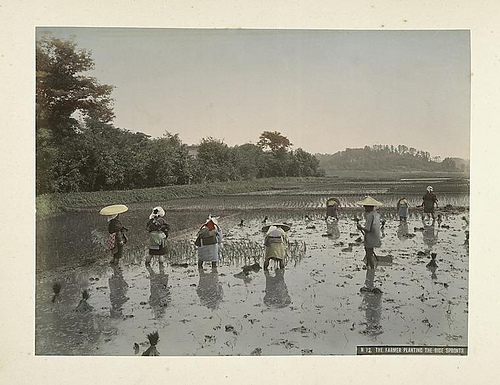- SEARICE explains its approach to seed sovereignty and farmer participation.
- Nature on IFPRI’s report on agricultural R&D in Africa. Not pretty.
- Resilience Science on the UN Special Rapporteur’s sustainable intensification thing.
- The Gates Foundation is on a nutritional roll; most of yesterday’s posts are available from this round-up.
- New Mexico gets all protectionist about its chillies.
- IITA explains how it provides healthy germplasm. Various different interesting stories in there, stick with it.
- Farmer conservation power in India.
- How to control invasive species. Eat more weeds.
- Presentation on Trends in global nutrition and health: Local fruits and their potential importance for nutrition and health as seen at Pavlovsk berry meeting.
- Speaking of berries…
- The cerrado (and its crop wild relatives) is in trouble. We talked about this, weren’t you paying attention?
Nibbles: Natural history collections, Vancouver’s Old Apple Tree, Conserving local crops, Biofuels, Quinoa, Climate change
- Why don’t genebanks count as natural history collections?
- Saving The Old Apple Tree. That would be as opposed to any old apple tree.
- “If the indigenous seeds are important enough for scientists to fight to preserve in a seed vault deep in the belly of a mountain in Norway, would it not make sense to ensure these seeds survive within their own environments?” Good question from Uganda.
- Council on Bioethics says “Biofuel policies are unethical”. Here’s the Press Release.
- Local women’s quinoa cookbook (in Spanish) wins prize (in France). We’re calling it quinoa, not quinua, because we want people to find us.
- CARE cares about climate change and food security.
Nibbles: Lupine, Methane, Food crisis, Nutritionists, Carrots, Poi, Barhal, Mung bean, Invasives, European bison, Mango
- Saving the scrub lupine. Well, it’s a crop wild relative of sorts.
- Dietary approaches to reduction of belching. No, not less beer and peanuts in front of the TV.
- “Governments and institutions should strongly promote new agricultural technologies suitable for smallholders through increased investment in crop breeding and livestock research.” That would be IFPRI on the actions needed to prevent recurring food crises. Hope that includes supporting the genebanks.
- “Can’t nutritionists make up their minds? They keep changing things!” Nuff said.
- Carrots are exotic? In Canada? Yes indeedy.
- Rachel dissects the cost of proper poi in Hawaii.
- Behold Barhal, relative of breadfruit.
- High yielding mung-bean repatriated to Somalia. Genebanks protect and serve?
- Do your bit for conservation, eat an invasive. Or, perhaps, a bison?
- Bad news for Indian mangoes. What I want to know is whether there are any varieties that are doing really well.
- Mediterranean forests going up in smoke. Bad for the crop wild relatives in them too, no doubt
Nibbles: Yak, Flax, Diet, Naked chicks, Insectivory, Pastoralism conference, ICTs
- Know your yak breeds. h/t Brendan
- Neolithic linen.
- You are what your mother ate. Its all down to the Hnf4a gene.
- Naked chick necks? It’s all down to an interaction between the BM12 gene and retinoic acid receptors.
- Laos swallows the lets-eat-insects bait. Dutch follow suit?
- The future of pastoralism. It has one? Is this the alternative?
- Citizen science in national parks.
Satoyama in peril?
It may not be the thing that’s at the top of people’s agendas in Japan at the moment, but one does wonder what the long-term effect of the tsunami will be on the satoyama of the region, their agrobiodiversity and the people who maintain it. 1 The BBC series on the satoyama from a few years back is no longer available on the BBC’s website, but some of the documentaries can be found elsewhere. 2
